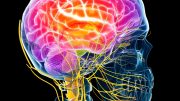
Researchers from the University of Michigan have identified a “d factor” representing an individual’s tendency for distraction, with potential links to ADHD. This was derived from a comprehensive study of 1,220 participants’ distractibility habits and ADHD symptoms.
The new measure incorporates external distraction, intrusive thoughts, and mind-wandering – and is also linked with an intense state of hyperfocus.
In a study of different types of distraction involving more than 1,000 participants, researchers statistically derived a novel measure—dubbed the “d factor”—that could represent a person’s general tendency towards distraction and may be linked with attention-deficit/hyperactivity disorder (ADHD). Han Zhang of the University of Michigan, Ann Arbor, and colleagues recently published their findings in the open-access journal PLOS ONE.
Background on Distraction Studies
Prior research has explored various types of distraction, such as external stimulations, repetitive negative thinking, or daydreaming. Some research has suggested that vulnerability to different types of distraction could potentially be mathematically captured by an overarching “distractibility factor.” However, the evidence for a distractibility factor has been limited, and most studies have not considered a comprehensive collection of different types of distraction—including some associated with ADHD.
Research Methodology and Findings
To better understand different types of distraction and their potential relationship with ADHD, Zhang and colleagues asked a total of 1,220 participants to complete an extensive series of questionnaires to evaluate their tendency to experience different kinds of distraction in their daily lives, such as difficulty concentrating with a TV on or losing oneself in daydreaming. The questionnaires also evaluated symptoms of ADHD and hyperfocus—a long-lasting state of intense concentration sometimes linked to ADHD.
Analysis of participants’ answers surfaced three key, distinct factors that could statistically explain patterns observed in the data: external distraction, unwanted intrusive thoughts, and mind-wandering. The researchers found that the statistical relationships between these three factors could be accounted for by a single, higher-level factor—which they named the d factor.
Further analysis showed strong statistical links between the d factor and a person’s ADHD symptoms. The d factor was also linked to hyperfocus, suggesting that hyperfocus might, in part, reflect attention difficulties.
Implications and Future Directions
These findings could help lead to a better understanding of people’s distractibility and its relationship to ADHD. The authors note the need for additional research to further explore the nature of the d factor and its links to ADHD, as well as the need to employ additional data-gathering methods, such as behavioral tasks or tests.
The authors add: “A critical finding of our study is the identification of a higher-order factor that could be construed to represent a general distractibility trait. People who score high on the ‘general distractibility’ trait are more easily distracted in many situations.”
Reference: “A d factor? Understanding trait distractibility and its relationships with ADHD symptomatology and hyperfocus” by Han Zhang, Akira Miyake, Jahla Osborne, Priti Shah and John Jonides, 25 October 2023, PLOS ONE.
DOI: 10.1371/journal.pone.0292215
This work was supported by the National Science Foundation [grant number: 1658268] awarded to the University of Michigan with JJ as Principal Investigator and the National Institute of Mental Health (Unique Federal Award Identification Number (FAIN): R21MH129909) awarded to the University of Michigan with JJ as Principal Investigator. The funders had no role in study design, data collection and analysis, decision to publish, or preparation of the manuscript.









Be the first to comment on "The “D Factor” – Scientists Uncover New Measure Linked to ADHD"